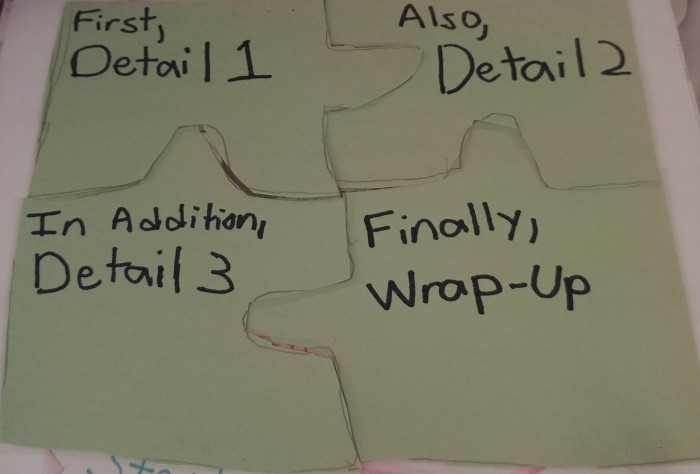The teacher understands and uses a variety of instructional strategies to encourage learners to develop a deep understanding of content areas and their connections, and to build skills and apply knowledge in meaningful ways.
For teachers to teach, they must have relevant strategies to teach their content. In other words, they must be able to connect their strategy to the content they are teaching. They must constantly be looking for new ways to teach the content either online or from current research. If they find an instructional strategy that works, they should continue to use that instructional strategy if it is relevant. If it does not work, they must look for new instructional strategies to try that they can add to their ideas for instructional strategies. Perhaps instructional strategies are the most important ideas with which a teacher must be equipped. If a teacher does not have instructional strategies, he or she has no way to teach. Preferably, teachers should pick instructional strategies that allow students to be actively involved in their learning. Of course, not all interactive instructional strategies are good instructional strategies, but teachers must find instructional strategies that allow students to interact with the content and learn. If a strategy is not helping the students learn, a teacher should probably not use that strategy again.

One way I have learned to apply instructional strategies is to make comparisons to ideas to which the students have already been exposed. My first artifact is a puzzle I used to help my students connect their writing using transitions. To gather ideas for their writing, my students have been using a four-square writing organizer in which they put their topic sentence in a middle square of the four-square organizer. Then, they put their reasons in the first three squares of the diagram. Lastly, they put their wrap-up sentence in the last box. I taught them a lesson on using transition words to help connect their writing, and the book on teaching the four-square organizer said to compare transition words to the little connecting pieces on a puzzle. Thus, I had the idea to have the students solve a puzzle based on transition words and the four-square organizer to show how transition words connect writing. I wrote the transition words and detail number on the puzzle pieces, so they know that certain transitions go with certain details; furthermore, certain transitions go with the wrap-up paragraph. I chose to use this artifact because I have discovered I can use this to show connections in not just writing, but other content areas as well. This is the first instructional strategy that I have used to associate with a particular idea. I have used the strategy of using puzzle pieces to show connections in other contexts as well. For example, I used the puzzle piece to show connection strategy to show how linking verbs connect the subject to information. This artifact is significant because it shows how a teacher discovers how one instructional strategy can be used for a variety of ways to teach the idea of connections. Surely, writing and grammar are not the only subject in which ideas are connected to one another. I could use puzzle pieces to show how ideas connect in math, science, and social studies as well. Of course, if I find a better way to show this idea within a certain lesson, I will use that, but this is a strategy I discovered to show how ideas connect and can use to show those connections.
When a teacher picks an instructional strategy for his or her students, the students should be able to interact with the content. Teachers should not always use a simple worksheet as an instructional strategy. Even if a teacher uses a worksheet, there should always be some interactive component to the worksheet. My second artifact is just that, a worksheet that allows students to interact with the content. The worksheet is called “Multiplication Dice”, in which the students first roll two dice to make a two-digit number. Then, they roll one dice for a one-digit number and multiply those two numbers. I chose to use this artifact because once I saw this idea on a website called Super Teacher Worksheets, I immediately liked it because this was a way in which the students could interact with the content. Furthermore, it was an idea with which they could have fun. I wanted to use this idea for my lesson on breaking apart to multiply lesson, but I ran out of time to use it. However, I planned on using this same strategy for a lesson on multiplying numbers using the standard algorithm to solve a multiplication problem. It is too good of a strategy for my students not to use, so I can try to use it when it is appropriate. This artifact is significant because it shows how teachers need to pick an instructional strategy that allows students to interact with the content. Instructional strategies must be student-centered and give students an opportunity to engage with the content. Simple worksheets do not allow students to interact with the content in a meaningful context. They only allow students to answer questions on a piece of paper. It does not really allow them to apply the content. On the other hand, this worksheet for this dice game allows them to interact with the content as well as have fun with it.
This artifact demonstrates my understanding of this standard because it shows that I understand that students must always interact with the content; therefore, I must pick instructional strategies that allow opportunities for interactive learning. It shows that I pick instructional strategies in which students can apply the content to a game rather than simply writing it down on a simple worksheet. This artifact makes me a better teaching candidate because it shows that I am constantly looking for instructional strategies that allow students to create meaningful learning experiences. The alternative for a learning strategy like this is to do work out of their math book. I always try to get as far away from just having them solve problems out of the book as possible. Therefore, I have to go online to Super Teacher Worksheets or Teachers Pay Teachers to look for an idea other than using the book. Even if they must use the book, I look for different ways to implement that content because I do not want them just solving problems from a book. I look for different instructional strategies that are relevant to the content I am teaching, and this is one of those ideas I found that allows my students to have a meaningful and interactive learning experience.
